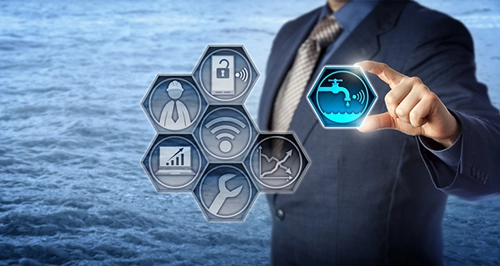Trends
Trends
NOV
15
2022
Spain
Digitalising natural resource management
More than 50,000 cubic meters of water saved by connectivity
Periods of drought are increasingly affecting much of Europe. According to the latest data from the European Drought Observatory (EDO), 47% of Europe faces insufficient precipitation. The European Commission has described the situation as critical and says special measures must be adopted to manage water in the hardest-hit countries: Italy, France, Germany, Hungary, Portugal and Spain.
Digitalisation can deliver savings by comprehensively managing the water cycle and is a vital ally in municipalities improving management of this precious commodity.
This was the objective of the project that Cellnex and Global Omnium launched in November 2020 in Burjassot and La Pobla de Farnals, two municipalities in the province of Valencia, Spain. After nearly two years, the project has been extended to 19 more municipalities, reaching a total population of nearly 80,000 inhabitants.
“Technologies such as remote meter readings allow us to optimise limited resources, making it possible to check on each home without any need to travel to the meter to find out what is happening”, says Rafael Garcia, mayor of Burjassot, Valencia, Spain. “The administration has a responsibility to continually educate society and drive home the fact that water is a finite resource”, adds Garcia.
The project, managed by Adesal Telecom, the Valencian company owned by Cellnex and Global Omnium, involved installing nearly 40,000 meters connected to an Internet of Things (IoT) network. “Digitalising the process has allowed us to detect leaks in the distribution network and also in customers’ indoor installations, leading to annual savings –through early detection– of more than 50,000m3 of water and of the equivalent of 120 tonnes of CO2 greenhouse gas emissions“, says Victor Gonzalez, Head of Smart Metering at Global Omnium.
The Cellnex and Global Omnium project uses an IoT network to which all meters are connected, and an online platform that systematically collects data generated in real time. Fundamental to this technology is “analysis of what is needed to ensure that the networks adapt to the use cases, and not the other way around”, says Antonio Eroles, Business Development IoT & Smart Services at Cellnex Telecom. “There is a growing perception of the benefits of digitalisation, such as understanding customer consumption, predicting demand and optimising operations”, he adds.
The information collected, visible on Cellnex’s SmartBrain online data management platform, facilitates not only remote monitoring of the IoT network but also decision making –often preventive– because it is converted into valuable information, which makes it easier to deploy improvements in the network.

The project is ongoing and is expected to reach 50,000 connected meters by year end. It aims to reach 300,000 by 2025.
“In general, everyone can benefit from this digitalisation, but it is of particular help to vulnerable communities in which people live alone, since municipal social services are automatically notified of stops in home water consumption, enabling them to check for problems in the home”, says José Luis Ábalos, Manager of Adesal Telecom
More services which already exist in other cities can be added to these types of IoT networks, such as sensorised social housing to monitor and improve comfort and energy efficiency. One such example is the Casa Bloc project, where the Hàbitat 3 Foundation and Cellnex have provided connectivity to 17 social rental housing units, offering a housing solution to 45 low-income individuals facing situations of vulnerability. Tenants highlight the usefulness of installations which allow them to track their consumption of the various supplies of electricity, gas and water and to monitor air quality.
An IoT system can also monitor sensorised parking lots and optimise public space use, or enhance smart waste management with sensorised containers able to detect when they are full, thus facilitating optimal waste collection routes. The e-denderry project in Ireland provides an example of such usability. The IoT network deployed by Cellnex controls sensors in four core areas of the city of Edenderry: parking, waste collection, air quality and building management; making it possible to extract data in real time and manage city services more efficiently.

















